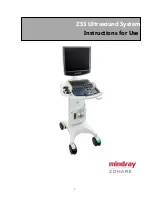
Descriptions of Parameters
Setup Editor Parameters
5-2
Mod Wheel (MIDI 1)
Knob C (MIDI 6)
Knob D (MIDI 13)
SW 2 (MIDI 9)
SW 4 (MIDI 29)
You may be wondering why you can set initial values for
these
MIDI Controllers and not others.
It’s because most of the PC1’s programs use at least one of these MIDI Controllers to do
something (a common example is MIDI 1, which the Mod Wheel sends by default, and which
controls vibrato or tremolo in many programs). Appendix C contains a list of programs and
which MIDI Controllers the physical controllers are assigned to in each program.
Note that Controller Value which is displayed by the program editor is actually the 'Current
Controller Value'. For example, if you turn Knob C before entering the program editor, the new
value will be displayed instead of the previously stored value
Setup Editor Parameters
There are seven menus in the Setup Editor. With one exception, each zone in a setup has an
independent set of these seven menus (the exception is the Arpeggiator menu, in which all
parameters but Zone Enable affect all zones in a setup):
MIDI Xmit
Various MIDI-related features (like what MIDI channel each zone uses)
Program
Bank and program assignments, and other program-related parameters
Key Range
Activation/deactivation of keys, pitch control
Transpose
Uniform pitch-shifting of entire zone
Velocity
Response to your playing style
Controllers
Functions of physical controllers (wheels, Knobs, ribbon, pedals, buttons)
Arpeggiator
Activation/deactivation and control of arpeggiator
The Effects menu also acts as an adjunct to the Setup Editor, enabling you to modify the effects
associated with a setup. See page 5-22 for a discussion of Effects Edit Mode parameters.
Each zone in every setup has an independently-programmable set of Setup-Editor parameters;
when you change a value for one of these parameters, you’re affecting only the current zone in
the current setup (except for the Arpeggiator parameters, which affect the entire setup). Always
check to make sure you’ve selected the zone you want to edit before you make changes.
If you want to reprogram the internal setup, use the Setup Editor to edit Zone-1 parameters, then
save your changes to the internal setup.
Throughout this section, we’ll refer only to setup editing. Remember, however, that any changes
you make to Zone 1 in the Setup Editor can also be applied to the internal setup.















































